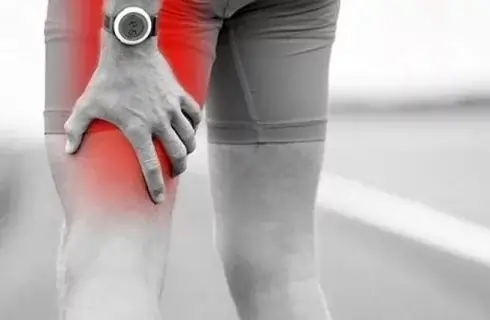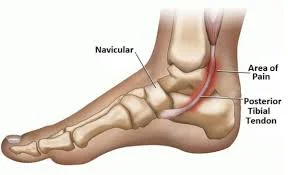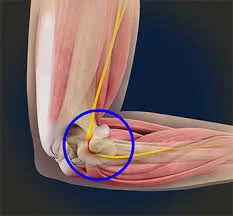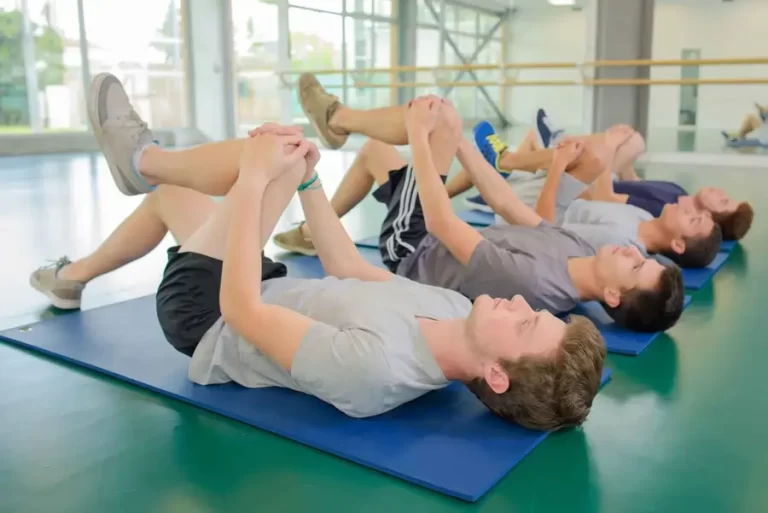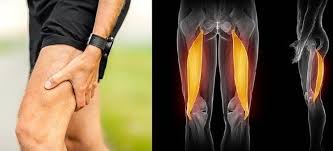No Pain, No Gain: A Myth or a Mantra for Success?
No Pain, No Gain. It’s a common term used when one grows older.
The phrase “No Pain, No Gain” has long been a popular mantra in the realms of fitness and personal development. It suggests that enduring hardship is essential for achieving success and reaching one’s goals.
Parents and coaches frequently advise their student-athletes, “No pain, no gain,” before a workout or game. It is incorrect to feel that you aren’t working out hard enough if your muscles don’t hurt.
When you are in pain, exercising through it may appear to be a sign of grit and endurance, but it is your body’s signal to stop and think about how to deal with it, not to keep going!
After an exercise, the body does not have to feel shattered. Especially when student-athletes are younger and just starting out in athletics.
If you follow the motto “no pain, no gain” when working out, you may gravely injure yourself.
It is possible For example, if you’re trying to improve the strength and endurance in your legs with a squat regimen, you may experience some muscular burning while training. The burning sensation caused by lactic acid leaving the muscles should lessen 30 to 60 seconds after you stop working out.
Recognizing the Myth
- The phrase “No Pain, No Gain” means that you will not notice any results unless you physically strain your body to its limit.
- This way of thinking commonly leads to people overtraining, disregarding their bodies’ warning signals, and engaging in exercises potentially damaging their overall health.
Pain: The Body’s Alert System
- There are other ways to evaluate a workout’s effectiveness besides pain. Pain is the body’s technique of warning the brain about a potential problem.
- Expert trainers can help players push through discomfort and ask for more physical intensity, but your student-athlete does not have to follow suit.
- In reality, professional athletes are trained to understand their limits, which helps them avoid overusing their muscles and joints and decreases the risk of a catastrophic injury.
Push past the uncomfortable spot
- Regular exercisers are familiar with the burning sensation or tiredness that comes in their muscles when they push harder than they are accustomed to.
- This is what’s going on within your body. Lactic acid is created when a muscle is forced to work harder than it can ingest oxygen from the blood, resulting in a burning feeling. People who have done a lot of exercise previously described it as a fantastic workout or exhaustion.
- Lactic acid production improves blood flow to the muscles, allowing you to become stronger and more resilient the next time.
- Thus, for exercises such as swimming, weightlifting, or jogging, there is no gain without pain.
Pain does not test the strength of your muscles.
- Our bodies respond to physical pain by instructing us to halt movement and check for damage. Even little discomforts should be addressed and evaluated, not ignored.
- There is a distinction between the discomfort you feel while working out to increase muscle and a real injury. If your symptoms increase or you notice swelling, seek medical treatment right once.
- Despite common misconceptions, suffering does not have to prevent you from progressing toward your fitness goals. Exercise should be tough, even if it does not cause pain. Pain during exercising may indicate incorrect technique, overtraining, or underlying issues that require attention. Prioritizing painless exercise promotes endurance and sustainability in a fitness plan.
The Body’s Development versus Physical Stress
- It’s no secret that young children are significantly more lively and active than adults who work from a desk.
- Regular exercise promotes muscle and bone strength, as well as mental and cognitive health, which is crucial for developing school-age athletes.
- When student-athletes are initially introduced to competitive sports, which typically occurs between the ages of 8 and 13, training and technique can be physically taxing, even for these young players.
- The majority of sports necessitate some level of strength and technique training, which may result in safe pain during a gym session if taught under constant supervision by a coach.
- Although the growing body is more vulnerable to injury, it is better equipped to tolerate suffering.
- It is crucial to distinguish between pain that suggests potential danger and discomfort associated with strenuous activities. While discomfort is a typical part of pushing yourself to the limit, pain could indicate an injury. A safe and effective workout plan is dependent on your ability to listen to and interpret your body’s instructions.
Be Sore, Not in Pain
- It is possible to recognize when enough is enough without experiencing pain. When weariness interferes with technique and posture, it is time to rest.
- Discuss with your student-athlete the importance of listening to their body, their suffering, and experts’ advice on when to quit and when to carry on.
- Pushing the body beyond its limits regularly can lead to overtraining syndrome, which reduces performance and raises the risk of disease and injury. The overtraining syndrome also produces fatigue. Overtraining stifles development rather than promoting it, and it can have negative long-term effects on one’s physical and mental health.
Avoid injury with proper technique
- Using the proper form is critical for avoiding injuries when working out. I recommend cooperating with a trainer who is aware of your aims.
- Tendinitis, bursitis, and stress fractures may arise from overdoing it with poor form. Pay heed to your body. If you’re experiencing pain that you’re not used to, try a new technique and see if it helps.
- One of my patients reported that doing bicep curls ached. Although I couldn’t find anything wrong, the pain subsided when I suggested switching up your grip. Occasionally, a tiny alteration can have a significant influence.
The Function of Rest and Recovery
- Any successful fitness program must include rest and recuperation. Muscles take time to grow stronger and repair, and getting adequate sleep allows the body to respond to activity.
- Achieving long-term advantages without losing health necessitates striking a balance between strenuous exercise and enough rest.
Utilize it or forfeit it
- This is where the concept of no gain comes into play.
- If you’re not in agony, your progress has probably stalled. You continue to benefit from keeping up your conditioning. However, you must put in more effort if you want to improve and grow stronger.
- If you don’t exercise, the muscles used for those specific activities will atrophy or tighten. Avoid missing more than two days of exercise or physical activity.
- Muscles’ ability to lose strength varies. For example, physical therapy is required to rebuild quadriceps strength in a patient who is immobile for a week after surgery. Arm muscles, for example, will not atrophy as quickly.
Individualized Approach to Fitness
- Fitness requires a tailored approach because everyone is different, and what works for one person may not work for another.
- Exercise routines must be tailored to individual interests, physical levels, and goals in order to be effective over time. The goal should be to create an enjoyable and well-balanced workout regimen that improves overall well-being.
How do you determine when you’ve had enough?
It is possible to recognize when enough is enough without experiencing pain. When weariness interferes with technique and posture, it is time to rest. Anything that puts your body at risk of injury is a signal to halt.
Working with a certified personal trainer who can detect a breakdown in form and posture throughout your workout is the best way to ensure that you maintain proper posture and technique. Physical symptoms that you’ve had enough for the day include muscular tremors and nausea.
Conclusion
Finally, the aphorism “No Pain, No Gain” is a false approach toward fitness. Paying attention to your body’s signals, focusing on pain-free activity, and arranging rest and recovery time are all necessary for long-term and healthy improvement.
Fitness should be treated individually and balanced so that you can gain the benefits of exercise while not jeopardizing your entire health.
FAQs
What does “no pain, no gain” mean?
Here are various situations in which the aphorism “No pain, no gain” can be applied: I studied for the entrance exam for hours, but it was all for naught. John mocks the aptitude exam preparation segment, referring to it as “pain,” but he also claims that “no pain, no gain.”
If I’m not sore, am I still gaining muscle?
You don’t need aching muscles to build muscle or improve your fitness level. After a workout, you may feel tight or weary but not hurting. He notices that you may not experience much soreness even if you gradually increase the frequency and intensity of your workouts.
What does no pain no gains mean?
Informal expressions communicate the sense that suffering or hard work is necessary for success or growth.
Who started saying no pain no gain?
Benjamin Franklin stated, “There are no gains without pains.” The phrases “no pain, no gain” and “feel the burn” have gained prominence in recent years, courtesy of Jane Fonda’s 1980s workout DVDs.
References:
- Witte, D. (2020, September 29). Is No Pain, No Gain Correct? Witte Physical Therapy, Louisville & Plattsmouth. https://wittephysicaltherapy.com/2020/09/29/is-no-pain-no-gain-correct/
- Sharma, R. (2023, December 13). No Pain, No Gain: A Myth or a Mantra for Success? Mobile Physiotherapy Clinic. https://mobilephysiotherapyclinic.in/no-pain-no-gain/


